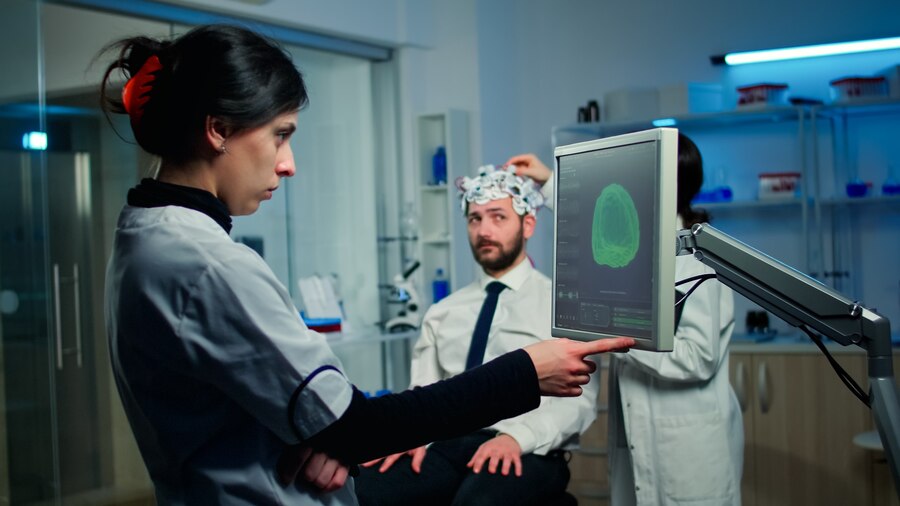- 14 March 2023
- 241
From Remote Monitoring to Virtual Consultations: The Versatility of Telecom in Healthcare

In today’s world, telecommunication has become an indispensable tool for industries across the board. From education to retail, businesses have leveraged this technology to streamline processes and improve customer experiences. However, nowhere is its impact more apparent than in the healthcare sector. The versatility of telecom has allowed medical professionals to offer remote monitoring services and virtual consultations, enabling them to connect with patients wherever they are in the world. In this blog post, we explore how these technologies are revolutionizing healthcare delivery and enhancing patient outcomes.
What is Telecom?
Telecom is an umbrella term that encompasses a wide range of communication technologies, including telephone, internet, and television. In the healthcare industry, telecom can be used for everything from remote monitoring to virtual consultations.
Remote monitoring is a key application of telecom in healthcare. With remote monitoring, patients can have their vital signs monitored remotely by clinicians. This can be especially useful for patients with chronic conditions who need to be closely monitored.
Virtual consultations are another important use case for telecom in healthcare. With virtual consultations, clinicians can consult with patients without the need for an in-person visit. This can save time and resources, and make it easier for patients to get the care they need.
The Different Types of Telecom
Telecom in healthcare has come a long way in recent years, and it shows no signs of slowing down. Hospitals and clinics have long used telecom to remotely monitor patients, but the technology has become much more versatile in recent years.
There are a few different types of telecom that are commonly used in healthcare:
1. VoIP: Voice over Internet Protocol is a type of telecom that allows voice calls to be made over the internet instead of traditional phone lines. This can be helpful for clinicians who need to make international calls or for patients who want to save on their phone bill.
2. Video Calling: More and more hospitals are using video calling to connect with patients virtually. This can be useful for consultations, follow-ups, and even check-ins.
3. Messaging: Hospitals are also using messaging platforms like SMS and MMS to communicate with patients. This can be used for appointment reminders, test results, or even general information about the hospital or clinic.
4. Wearables: wearable devices like fitness trackers and smartwatches are also being used in healthcare to collect data about patients’ health and activity levels. This data can then be used by clinicians to better understand their patients’ needs and tailor their care accordingly.
How is Telecom Used in Healthcare?
Telecommunications are vital in healthcare. They provide the means for patients to be monitored remotely, for doctors to consult with one another regardless of location, and for medical records to be shared quickly and easily.
Healthcare is an increasingly complex and fast-paced field, and telecommunications play a critical role in keeping up with the demand. Remote patient monitoring, for example, allows doctors to keep track of their patients’ vital signs without having to be in the same room. This not only saves time, but can also allow for earlier detection of problems.
Virtual consultations are another way that telecom is used in healthcare. With this technology, doctors can consult with each other regardless of location. This is particularly important when specialist advice is needed from someone who is not physically present.
Medical records are also often stored electronically these days, making them much easier to share between different care providers. This can save a lot of time when patients need to see multiple specialists or have their care transferred to another facility.
The Benefits of Telecom in Healthcare
Telecom in healthcare has revolutionized the way care is delivered. By enabling remote monitoring and virtual consultations, telecom has made it possible for patients to receive care from the comfort of their own homes. Here are just a few of the many benefits of telecom in healthcare:
1. Increased access to care: Telecom in healthcare has increased access to care by making it possible for patients to receive care from anywhere in the world.
2. Improved patient outcomes: By enabling remote monitoring and virtual consultations, telecom has improved patient outcomes by reducing hospital admissions and readmissions rates.
3. Reduced costs: Telecom in healthcare has reduced costs by eliminating the need for travel and accommodations for patients and families.
The challenges of Telecom in Healthcare
Like any other industry, the healthcare sector is constantly evolving and trying to meet the needs of patients. One of the most important changes in recent years has been the rise of telecommunications in healthcare.
Telecom can be used in a number of different ways to improve healthcare. For example, it can be used for remote monitoring of patients, which can help save lives. It can also be used for virtual consultations between doctors and patients.
However, there are also some challenges that come with using telecom in healthcare. One challenge is that it can be difficult to ensure that patient data is secure when it is transmitted over telecom networks. Another challenge is that telecom infrastructure can be expensive to implement and maintain.
Conclusion
In conclusion, the telecommunications industry is playing a growing role in healthcare. From remote monitoring to virtual consultations and beyond, telecom technologies are providing solutions that allow healthcare providers and patients to stay connected no matter where they are located. The potential of this technology to revolutionize healthcare is immense, and it will be exciting to see how it continues to evolve over time.

